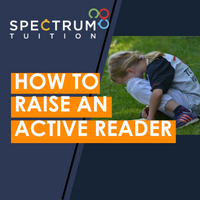When it comes to enjoying a book with your child, there’s reading and there’s engaging. Reading simply involves reciting the words on the page and telling a story. Engaging, on the other hand, is what happens when you really get into a good book; it involves empathising with characters, predicting the outcome, examining the ideas presented, making connections to other experiences, questioning what you are reading, and exploring the imaginary world of the book. If you want your child to be an active and thoughtful reader, it is a good idea to teach them how to engage with a book from a young age. Here are 4 fun ways that you can help your child develop these skills next time you read together.
1. Ask Questions
Throughout the reading process, it is a great idea to ask your child questions and encourage them to ask questions about what is going on. These can be simple of asking your child to interpret what they have just heard “Why is this character sad?” You can also ask more complex questions which require your child to use their imagination, such as “What would you do if you were in this situation?” or “How do you think this story will end?” The more we ask questions about what we read, the more we engage with it.
2. Pick Characters
A fun way of engaging with stories is to assign a character to you and your child or children. This works especially well if you are reading to several children. You can ask your child to put on a voice and say what the character says, or even act out scenes from the story. This is also a great way of encouraging your child to use their imagination to empathise with the characters in the story. Taking on a character requires you to think about what they might be thinking and feeling, which requires young children to exercise their empathetic imagination.
3. Find Connections
Another great way to make the reading experience more meaningful for your child is to connect it to their own experiences. Ask them if they have ever been in a similar situation to the characters in the book. Ask them if a particular character reminds them of anyone that they know.
4. Be Creative
After reading a story with your child, your child’s imagination should be running wild. This is a great time to channel this energy into some form of creative project, whether it be an illustration, a model, a painting or a collage. The ability to respond creatively to a book is a fantastic skill for your child to learn, as it engages the higher level creative parts of their mind.
Active readers don’t just read with their eyes; they read with their minds, their imagination and their emotions. If you can raise your child to engage actively and creatively with what they are reading, then you have taught them an amazing skill that will give them a significant advantage throughout their life!


